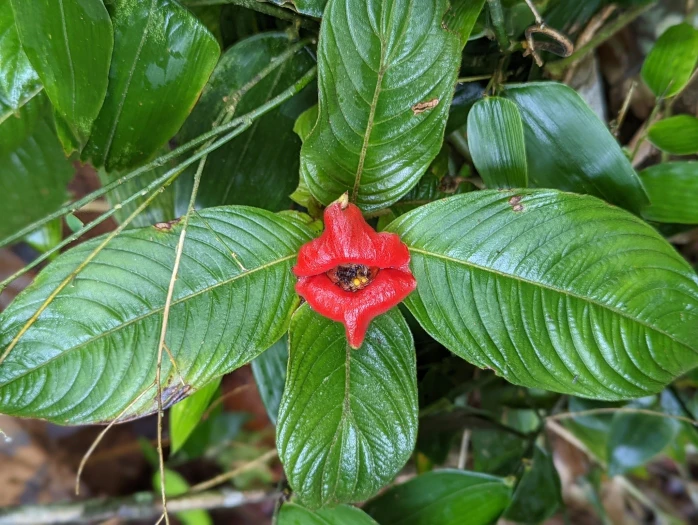Sore-Mouth Bush
(Palicourea tomentosa)
Sore-Mouth Bush (Palicourea tomentosa)
/
/

Cynthia Su
CC BY 4.0
Image By:
Cynthia Su
Recorded By:
Copyright:
CC BY 4.0
Copyright Notice:
Photo by: Cynthia Su | License Type: CC BY 4.0 | License URL: http://creativecommons.org/licenses/by/4.0/ | Rights Holder: Cynthia Su | Publisher: iNaturalist | Date Created: 2022-10-14T15:23:40-07:00 |

















Estimated Native Range
Climate Requirements for Summerville, South Carolina
| This Plant | Your Site | Plant Suitability for Your Location | ||
|---|---|---|---|---|
| • Precipitation | 88" - 142" | 51" | Aquatic | Aquatic |
| • High Temp. | 82°F - 93°F | 92°F | Your summer temperatures are normal for this plant. | Excellent |
| • Low Temp. | 59°F - 71°F | 36°F | Your winter temperatures are normal for this plant | Excellent |
This plant should grow well at your location with about N inches per year (Y minutes per month) of irrigation.
Summary
Palicourea tomentosa, commonly known as sore-mouth bush, is a large evergreen shrub native to understory forest habitats, including tropical rainforests and cloud forests in the tropical Americas, ranging from Mexico to northern Argentina. It typically grows to a height of 3-5 meters and is characterized by its dense foliage and striking inflorescences. The plant’s most notable feature is its conspicuous red bracts that surround the inflorescences, which are designed to attract hummingbird pollinators. The actual flowers are small, tubular, and yellow, blooming throughout the year depending on the local climate.
Sore-mouth bush is valued for its ornamental qualities, particularly the showy red bracts that provide a splash of color in shaded garden areas. It is used in tropical and subtropical gardens as an accent plant or for creating informal hedges. In cultivation, Palicourea tomentosa prefers partial to full shade, high humidity, and consistently moist, well-draining soil. It is relatively low-maintenance once established. This species has several ethnobotanical uses, including traditional remedies for headaches, sprains, and earaches. The Ka’apor people of Brazil also use its flowers as a hunting fetish, believed to aid in hunting success. While not commonly reported as invasive, it is important to monitor its growth in non-native areas to prevent potential spread.CC BY-SA 4.0
Sore-mouth bush is valued for its ornamental qualities, particularly the showy red bracts that provide a splash of color in shaded garden areas. It is used in tropical and subtropical gardens as an accent plant or for creating informal hedges. In cultivation, Palicourea tomentosa prefers partial to full shade, high humidity, and consistently moist, well-draining soil. It is relatively low-maintenance once established. This species has several ethnobotanical uses, including traditional remedies for headaches, sprains, and earaches. The Ka’apor people of Brazil also use its flowers as a hunting fetish, believed to aid in hunting success. While not commonly reported as invasive, it is important to monitor its growth in non-native areas to prevent potential spread.CC BY-SA 4.0
Plant Description
- Plant Type: Shrub
- Height: 4-6 feet
- Width: 3-5 feet
- Growth Rate: Moderate
- Flower Color: White
- Flowering Season: Spring, Summer
- Leaf Retention: Evergreen
Growth Requirements
- Sun: Part Shade
- Water: Medium
- Drainage: Medium
Common Uses
Bird Garden
Natural Habitat
Understory forest habitats, including tropical rainforests and cloud forests
Other Names
Common Names:
Scientific Names: Palicourea tomentosa, Callicocca tomentosa, Cephaelis barcellana, Cephaelis cyanocarpa, Cephaelis cyanocarpa, Cephaelis hirsuta, Cephaelis sagotii, Cephaelis tomentosa, Cephaelis vultusmimi
GBIF Accepted Name: Palicourea tomentosa